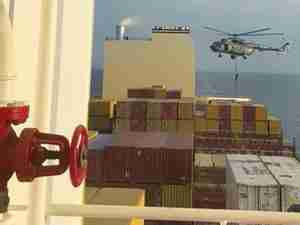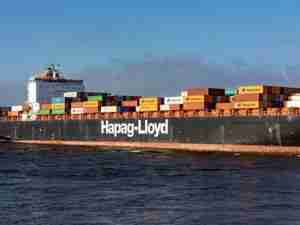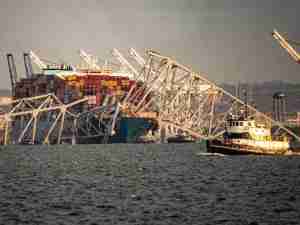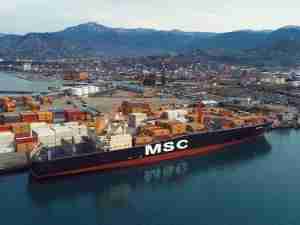Chief Executive Soren Skou said in a presentation in London that Maersk has already removed 9.5 percent of its Asia-Europe capacity and the group has the flexibility to cut globally by 9 percent.
The shipping industry is in its fourth year of crisis, hit by overcapacity, weak demand for cargo and low freight rates.
Maersk Line, a unit of Danish shipping and oil group A.P. Moller-Maersk, said on Feb. 17 that it would remove 9 percent of its capacity on its Asia-Europe trade lanes because overcapacity had knocked freight rates to unsustainably low levels.
"A serious over-capacity situation exists and the outlook is grim," Skou, who took over as Maersk Line's CEO seven weeks ago from Eivind Kolding when became head of Danske Bank, told a news conference in London.
"We have gained the market share we want to have ... Now our priority is to restore profitability," he said.
In presentation material, Skou showed Maersk Line with a global market share of 15.5 percent but a higher share on Asia-Europe routes.
Maersk's move to cut capacity to combat low shipping rates has been seen by analysts as a strategy shift, marking the end of Maersk's willingness to tolerate losses where necessary to beat its rivals.
"We had a plan to grow much faster than the market," Skou told Reuters on the sidelines of the briefing. "We have scrapped that now to say that we will grow with the market in the Asia-Europe trade, but basically also globally."
The Maersk group's container shipping business made a net loss of 2.88 billion Danish crowns ($512 million) in 2011, and the group has forecast more losses for the liner business in 2012 as a consequence of excess capacity.
Skou said that the efforts to restore profitability would mean reducing capacity on the key Asia-Europe routes, adjusting the fleet overall and increasing slow steaming.
Slow steaming, which occurs mainly on long-haul routes between Asia and Europe and across the Pacific, is the practice of sailing at lower-than-normal speeds to save fuel.
It also serves to tighten up the market in the face of a capacity glut as it takes longer to sail from port to port.
"We are reducing capacity, adjusting the fleet, lowering the investment rate and reducing costs," Skou said in the briefing.
In 2011 overall freight rates were 8 percent lower than in 2010 and that, combined with 35 percent higher bunker prices, reduced margins considerably, the company said in its annual report a week ago.
"We have a huge challenge on oil prices; for that reason alone freight rates have to come up," Skou said.
Last month the company raised rates on Asia-Europe routes for the second time this year.
Last year Maersk introduced a new daily service between several ports in Asia and Europe, and guaranteed that deliveries with that service would be on time, which was seen as an aggressive challenge to rivals, some of whom responded by forming new alliances.
Skou said that Maersk Line was optimistic that the Daily Maersk service would help it to raise rates going forward. (Reuters)









